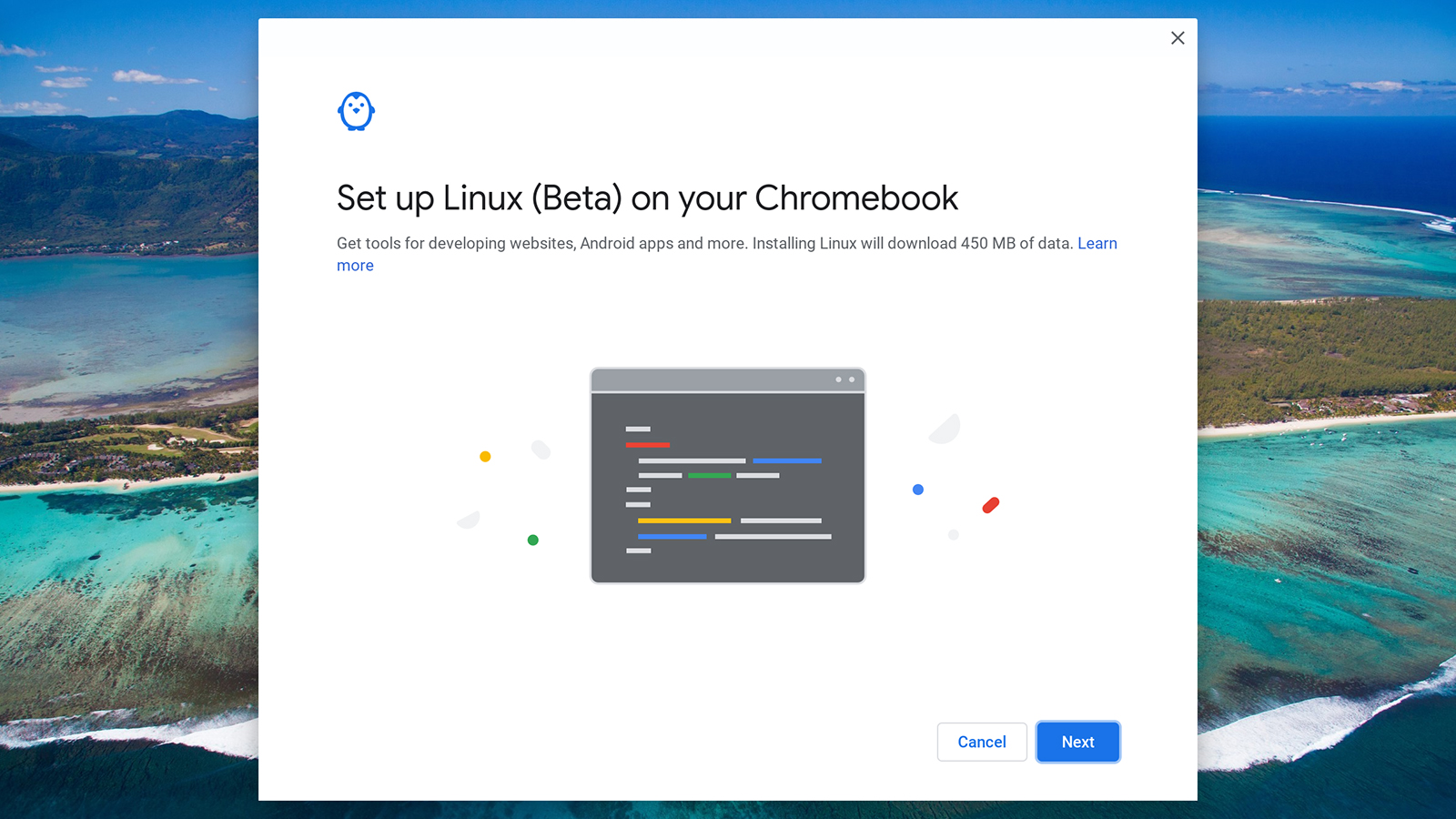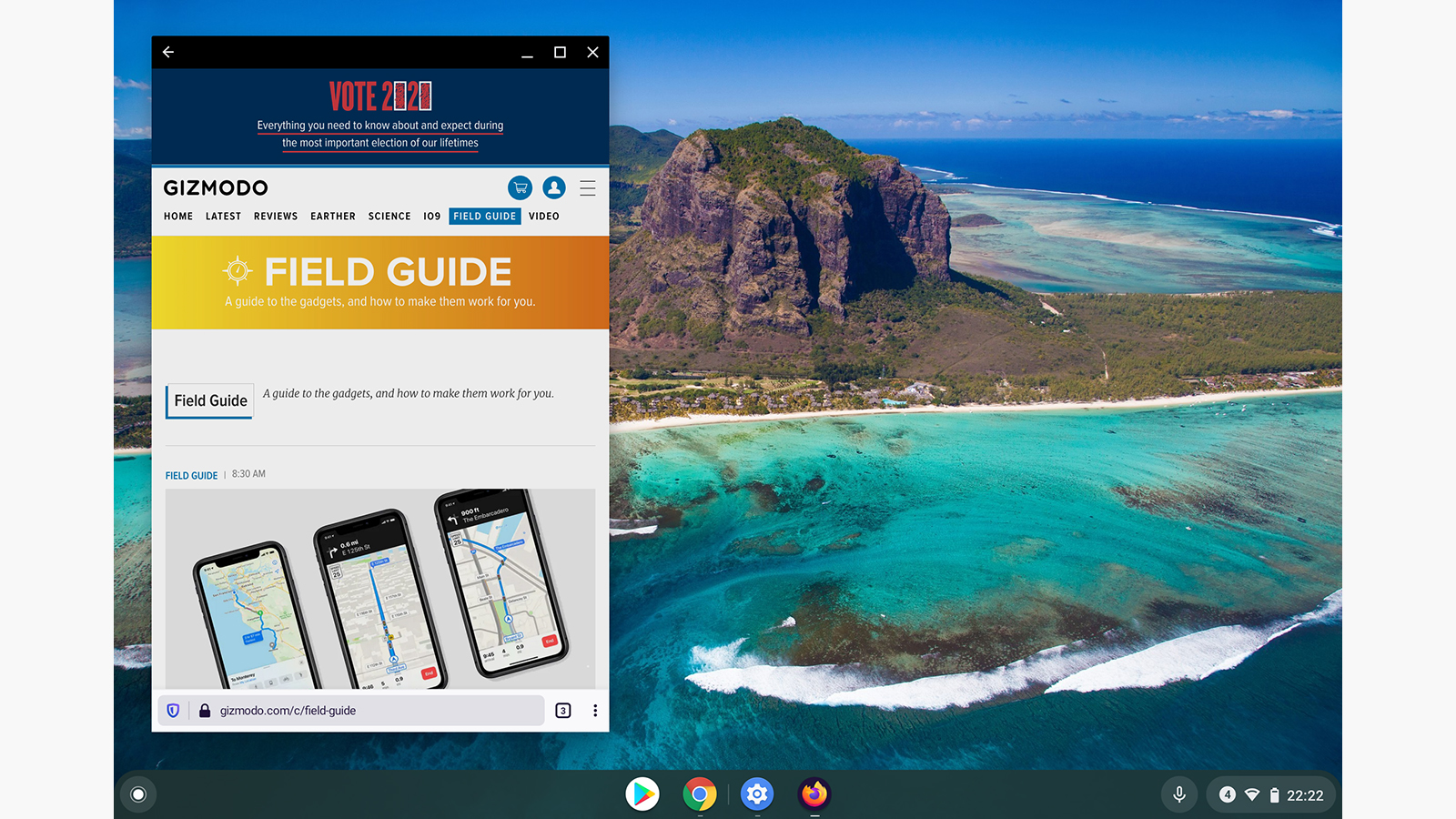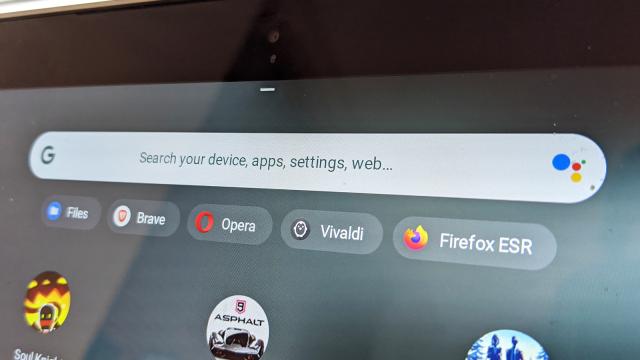Chromebooks are characterised by their ability to run Chrome and very little else — which makes sense, given the name — but these laptops are actually more versatile than you realise. One or two exceptions aside, you can run just about every other modern browser on your Chromebook if you need a change from Chrome, and there are a couple of ways to go about it.
The first way is the most involved, but it’s also the best in terms of user experience: to get a Linux sandbox running on your Chromebook. Chrome OS is based on the Linux kernel, and loading up the alternative operating system on Google’s laptops is more straightforward now than it’s ever been.
Google has an official support document on how to set this up, though keep in mind that the feature is still labelled as being in beta, so you should expect the occasional bug. Click the clock in the lower right corner of the Chrome OS interface, then click the cog icon to get to the Settings pane. Choose Linux (Beta) and Turn on.

After a few minutes of setup, you’ll see a blank terminal window, which can be a little scary if you’ve never used Linux before. It’s a good idea to run a couple of commands right away, which will ensure that the Linux software you’re running is up to date (hit Enter after each line).
sudo apt update
sudo apt upgrade
Then you’re ready to install some software. This being the command line, you need to know the name of the software packages you want, but they’re not hard to find — check this list for browsers, for example. Firefox is perhaps the one most people will be interested in, and that can be installed with the line:
sudo apt-get install firefox-esr
Other browsers that don’t come as part of Debian Linux are a little harder to install. The best route is to download the correct installation file to your Chromebook (making sure to place it in the Linux apps folder), then use the commands below. For example, for Vivaldi you would download the 64-bit Debian Linux package from here, then type these lines into the command line (hitting Enter each time):
sudo apt update
sudo dpkg -i vivaldi-stable.deb
sudo apt -f install
Replace “vivaldi-stable.deb” with the correct filename (it’ll typically have the version number included). Programs that you install in this way will appear in the Chrome OS app drawer, either on their own or under the Linux apps heading. Just click on the relevant icon to launch a browser, and Chrome OS handles all the necessary switching to and from the Linux environment.

These instructions should work in Chromebooks released in the last couple of years and several older models, too. If you get stuck at some point, or you want to explore what other Linux apps you can run on your Chromebook, there’s plenty of help available on the web. The official subreddit for getting Linux running on Chrome OS is a good starting point.
Browsers you install using this method will run as they would on Linux, in full desktop mode and with all the associated features enabled. They’ll snap to the sides of the screen if needed, just like Chrome windows, and maximise and minimise their windows as normal, so you can use several browsers together if you want to.
There is another way of running alternative browsers on Chrome OS, which isn’t quite as satisfying but a lot easier to do: Simply load up the Play Store portal on your Chromebook to take advantage of Android app support in Chrome OS, and install whatever secondary browsers you like.
The Android browser market is a crowded one, and you’ve got plenty of options to pick from: Firefox, Brave, Vivaldi, Opera, the Puffin Web Browser, etc. (though not all Android browsers will show up in the Play Store due to a lack of support — Microsoft Edge is one example).

The main downside here is that you’re running the mobile versions of these apps. Unless you specifically request the desktop site from the browser menu, websites will appear as they do on your phone. For many of the pages you come across on the web that won’t be a major problem, but it’s not the full browser experience.
Still, it’s more straightforward to install browsers this way, if you’re accessing a site that doesn’t work particularly well in Chrome, or if you want to sync passwords, bookmarks, and other data over from a browser on a different device.
If you’ve really had enough with Chrome and are eager to switch to a different browser on your other computers and phones, these two options mean you can take your Chromebook with you and still take advantage of its lightweight operation and powerful security features. As you would expect, there’s no way to get rid of Chrome completely — it still runs beneath everything else.
